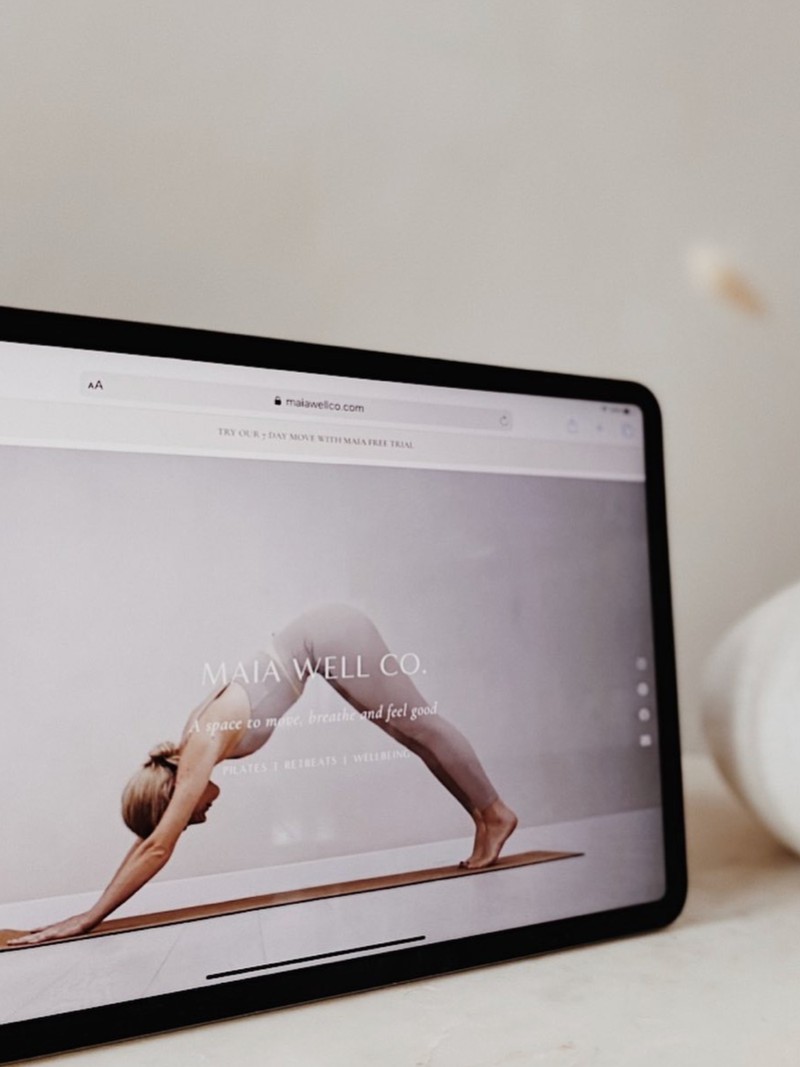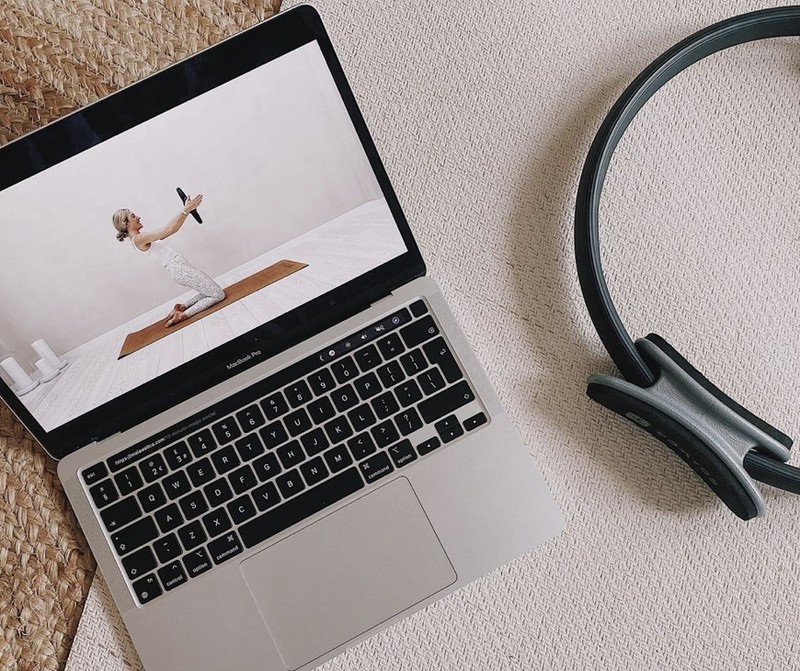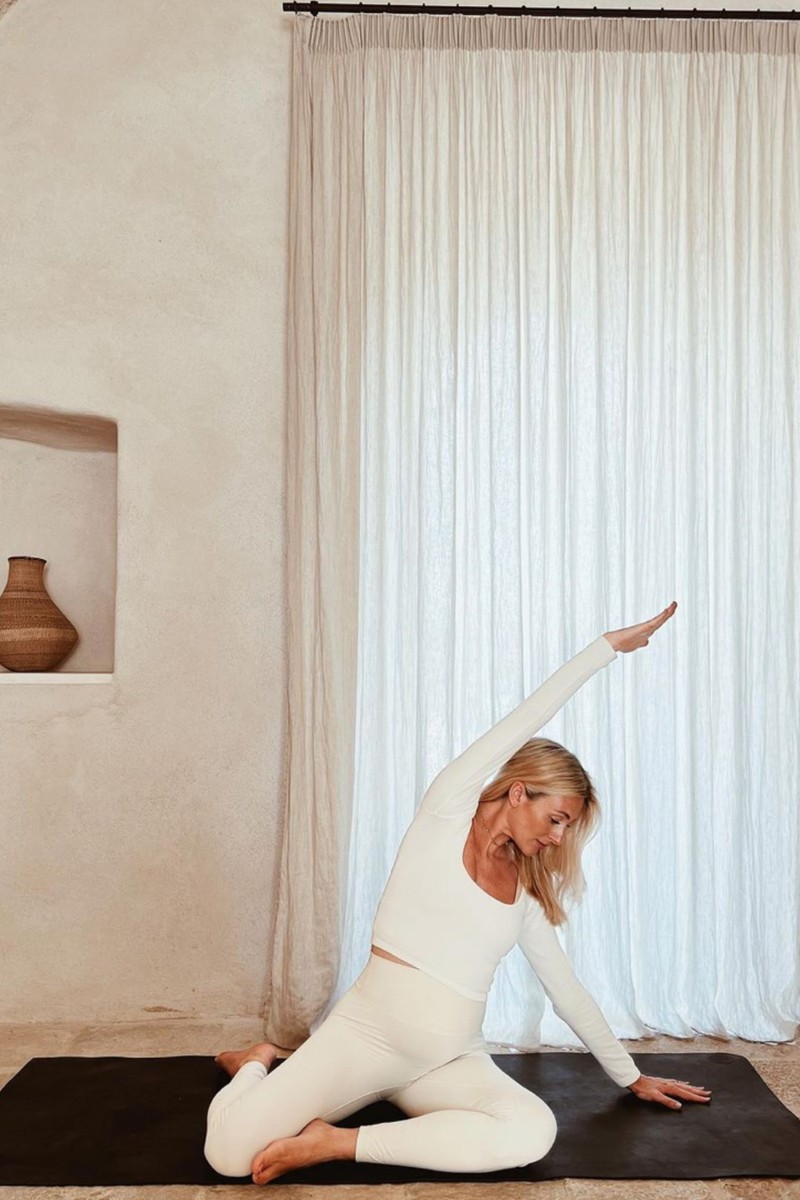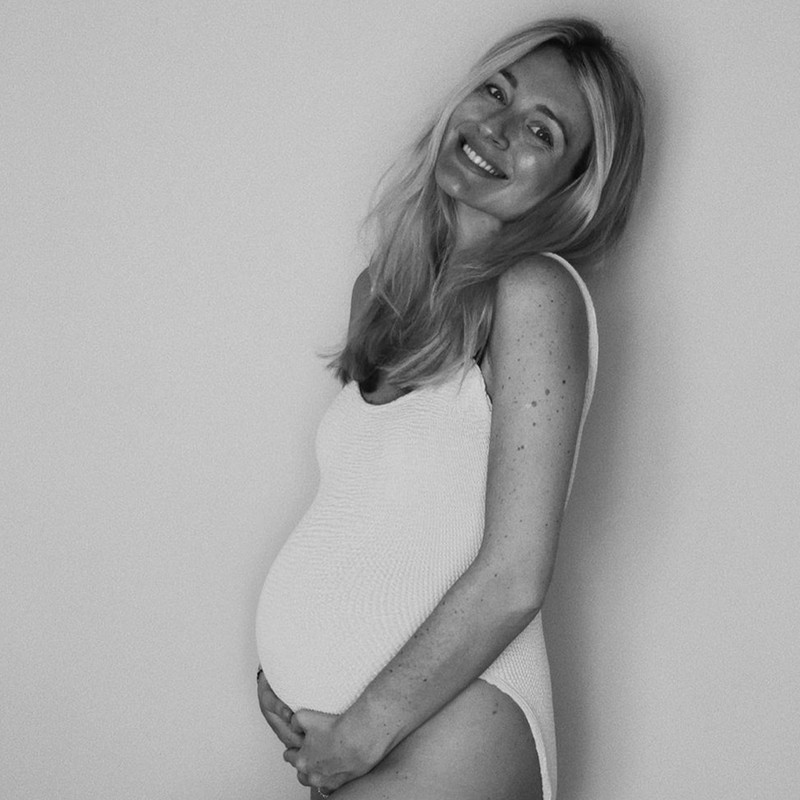My Pregnancy Fitness Rules: Zoe-Maia Jeffs

Staying active during pregnancy has many benefits. Studies show it can boost your mood and energy, improve sleep and decrease postpartum recovery time, so it’s no wonder women are now foregoing outdated advice that advocates a more sedentary pregnancy. Low-impact forms of exercise like Pilates are a great way to work out when pregnant, especially when you take hormones into account. Gentle workouts like Pilates are a form of mindful movement, which help us step away from our daily stressors, which in turn encourages production of oxytocin – our happy hormone. Oxytocin is particularly important in pregnancy as it keeps us feeling happy and positive, and it’s the hormone that aids labour and birth, too.
The body goes through multiple changes over those ninth months. As your bump grows, your abdominals start to separate to make room for your uterus and baby to grow, which means you need to be careful with any abdominal or core exercises, particularly later into your pregnancy. It’s worth being mindful of this in everyday life, too – when getting out of bed or off the sofa, for example, try to get into the habit of using the support of your arms to help you get up. Throughout pregnancy, your pelvic floor is under increasing pressure due to the weight of your growing baby and later post-childbirth. At the same time, the weight of your bump can affect your posture, causing discomfort in the upper back and shoulders, as well as in the lower back and pelvis. Pilates can help with all of this.
Fluctuating hormones mean you need to scale things back. As well as the extra weight from your growing bump, which shifts your centre of gravity, pregnancy hormones, including relaxin, loosens joints and ligaments, which makes you more flexible, but can also lead to injuries if you’re not cautious. For this reason, you should avoid holding positions or stretches for prolonged periods of time when pregnant.

Be ready to listen to your body. We are all different and nobody’s pregnancy journey is the same. Your body will demand different things from you during different trimesters, as well as on different days of the week, depending how well you’ve slept, rested and eaten. The Bump Collection offers trimester-specific workouts for expectant mums. On some days, you may feel tired and nauseous, which may be the perfect opportunity to try a gentle, mat-based class, a seated arms class, or a side-lying, lower-body sculpting class. There are also lots of gentle classes that feature stretches on all-fours as well as stretches to open and release tightness in the back, hips and shoulders. Within the hub, you’ll also find calming breathwork exercises, bedtime stretches and classes you can do fully lying down. Throughout my pregnancy, I’ve enjoyed using a small Pilates ball, long and mini resistance bands – especially for arm and glute toning classes later in pregnancy. A large Pilates ball also works wonders to open up the body and stretch and release any tight areas of discomfort.
I didn’t realise how much of a wild ride pregnancy would be. Finding out I was pregnant was so special, but I had intense ‘morning’ sickness (in reality, 24/7 sickness) throughout the first trimester. I lived off beige food and had very little energy – all things I’m not used to. I then caught Covid, had to cancel our honeymoon, missed my best friend’s wedding and then caught norovirus. In a nutshell, the first trimester was not fun. I tried to go for a gentle walk each day, but sometimes even that was a challenge. On the days I felt less nauseous, I would do a ten-to-20-minute class, focusing on stretching or gentle Pilates.
My energy levels came back in the second trimester. Around week 16, I woke up one day and felt almost normal again. I had more energy, which allowed me to focus on work and meant I could really enjoy this time. I loved seeing my bump grow and feel my baby move. As well as teaching virtual classes, I was also training private clients. In the second trimester, I started to modify certain movements, especially around the core. I focused on a mixture of safe and supportive Pilates with a focus on toning and strengthening the upper and lower body, pelvic floor strengthening and release work, mixed with some energising Pilates when I had the energy.
The final few weeks were spent preparing the body for labour and beyond. Some days, I’d just do ten minutes of stretching with moves that are supportive for labour – think lots of squats and a variety of positions kneeling on all fours – and on other days, I’d focus on the lower body. This is a particularly important time to listen to your body – don’t push it if it doesn’t feel right. It’s vital to tune into where you’re at and exercise at a pace that feels good. Some mums may have been incredibly fit prior to pregnancy so their pregnancy fitness level may be completely different to someone who didn’t move as much.

Aim to exercise at a moderate intensity throughout pregnancy. Never over exhaust yourself. A simple way to work out what this level is for you is to use a scale of perceived exertion – never work towards more than seven out of ten. Or, even simpler, always make sure you can talk during exercise and that you are never out of breath. It’s also worth being mindful of whether you have any contraindications during your pregnancy – always get these signed off with your doctor or midwife before doing anything new.
Look to activewear with lots of stretch. I’m not a huge fan of maternity activewear and haven’t found a prenatal brand I love, so I’ve been sticking to my usual brands, just sizing up. Varley is great for soft, stretchy fabrics, while Silou and Bumpsuit’s onesies are so flattering. I’ve also lived in Adanola and Vuori sets, again sizing up as my bump has grown. For me, fabrics with cotton, as opposed to tight and less stretchy lycra, has been best.
Don’t put pressure on yourself. Some women put so much pressure on themselves to keep up their pre-pregnancy fitness levels. Naturally, your body is going through so much change during this time, as well as various symptoms, such as nausea, tiredness and discomfort, meaning the way you move during pregnancy will be different. It’s important for women to know that this is absolutely normal is it’s okay – be kind to your body and give it what it needs to nourish both yourself and your growing baby.
To find out more about The Bump Collection with Move With Maia, a new prenatal Pilates platform hosted within the Move With Maia virtual studio, or to explore membership options, visit MaiaWellCo.com. SheerLuxe readers can get 20% OFF any membership using the code MWMSL.


DISCLAIMER: Features published by SheerLuxe are not intended to treat, diagnose, cure or prevent any disease. Always seek the advice of your GP or another qualified healthcare provider for any questions you have regarding a medical condition, and before undertaking any diet, exercise or other health-related programme.
DISCLAIMER: We endeavour to always credit the correct original source of every image we use. If you think a credit may be incorrect, please contact us at info@sheerluxe.com.

/https%3A%2F%2Fsheerluxe.com%2Fsites%2Fsheerluxe%2Ffiles%2Fwebsite-images%2F2025%2F04%2Fnew-parenting-background-image.jpg?itok=au3AjSlw)